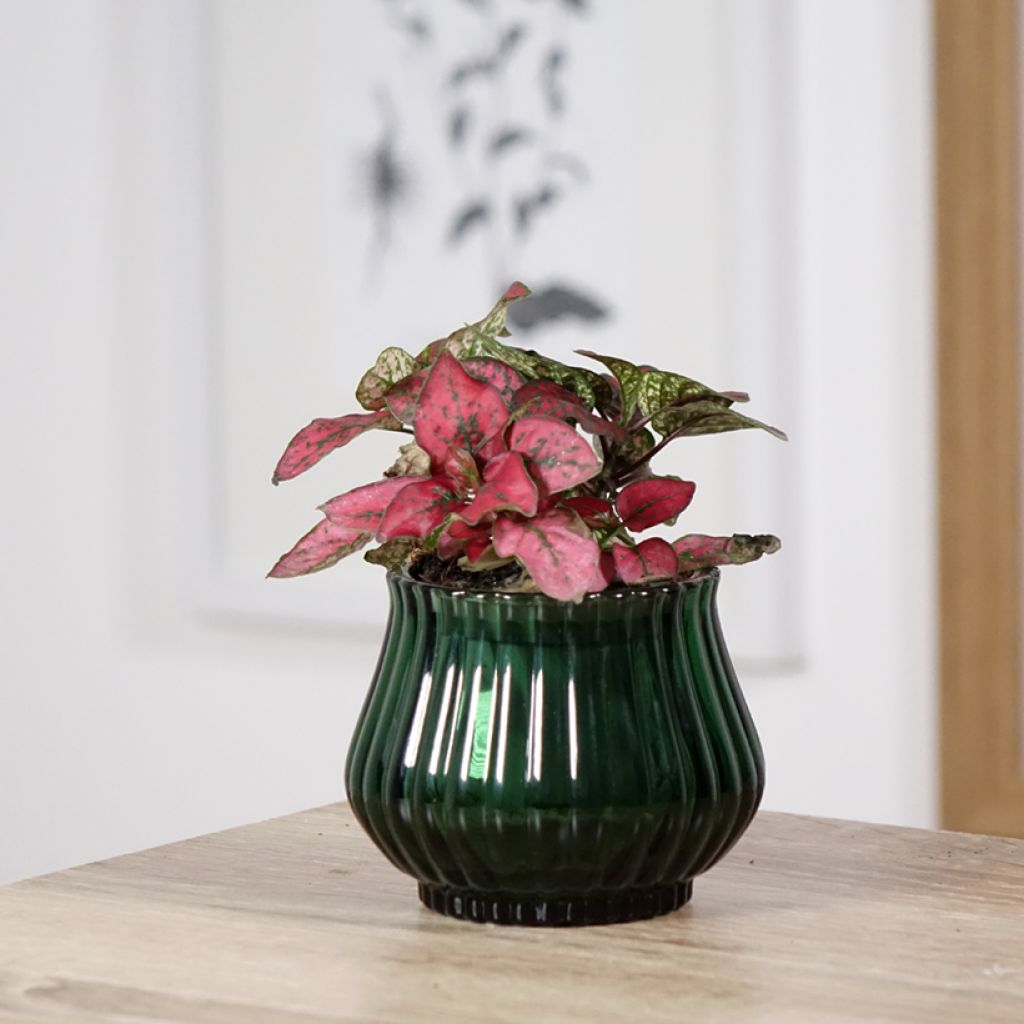

Hypoestes phyllostachya Red - Polka dot plant
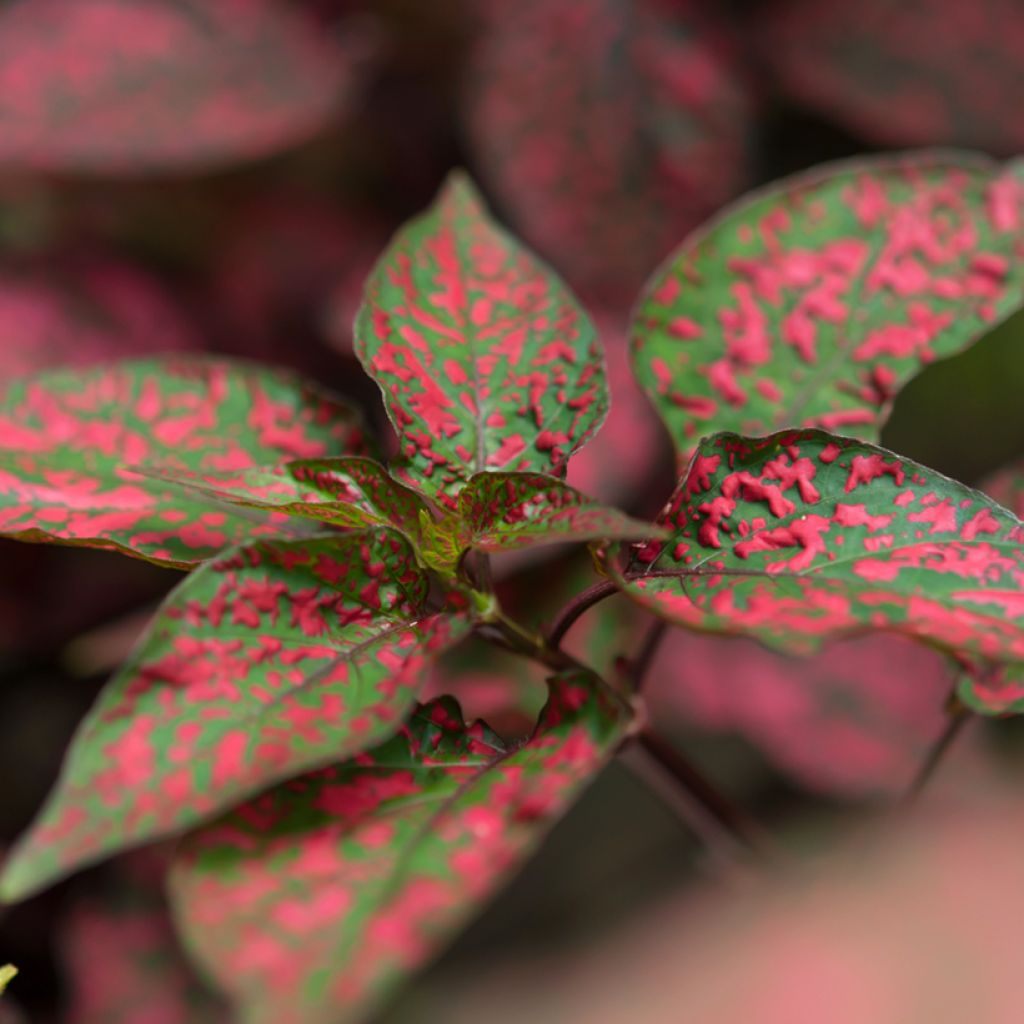

Hypoestes phyllostachya Red - Polka dot plant
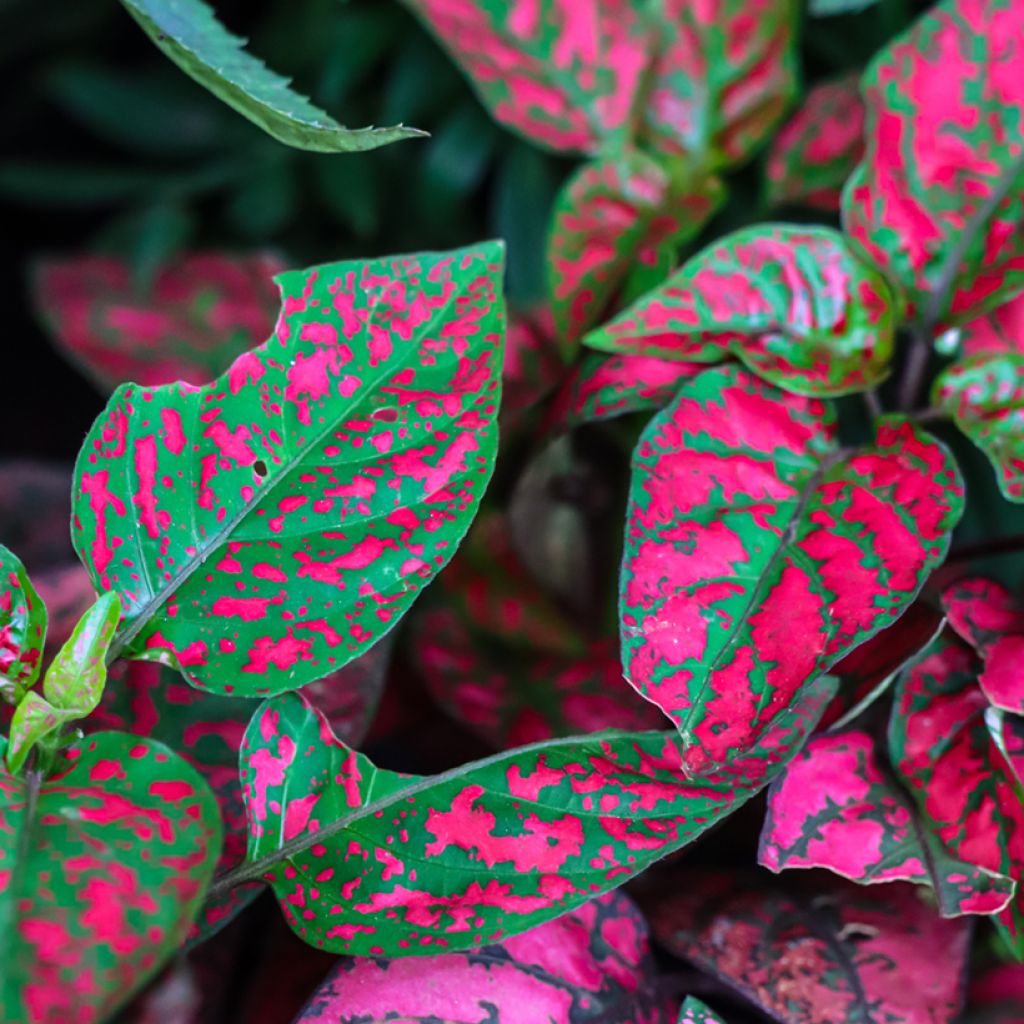

Hypoestes phyllostachya Red - Polka dot plant
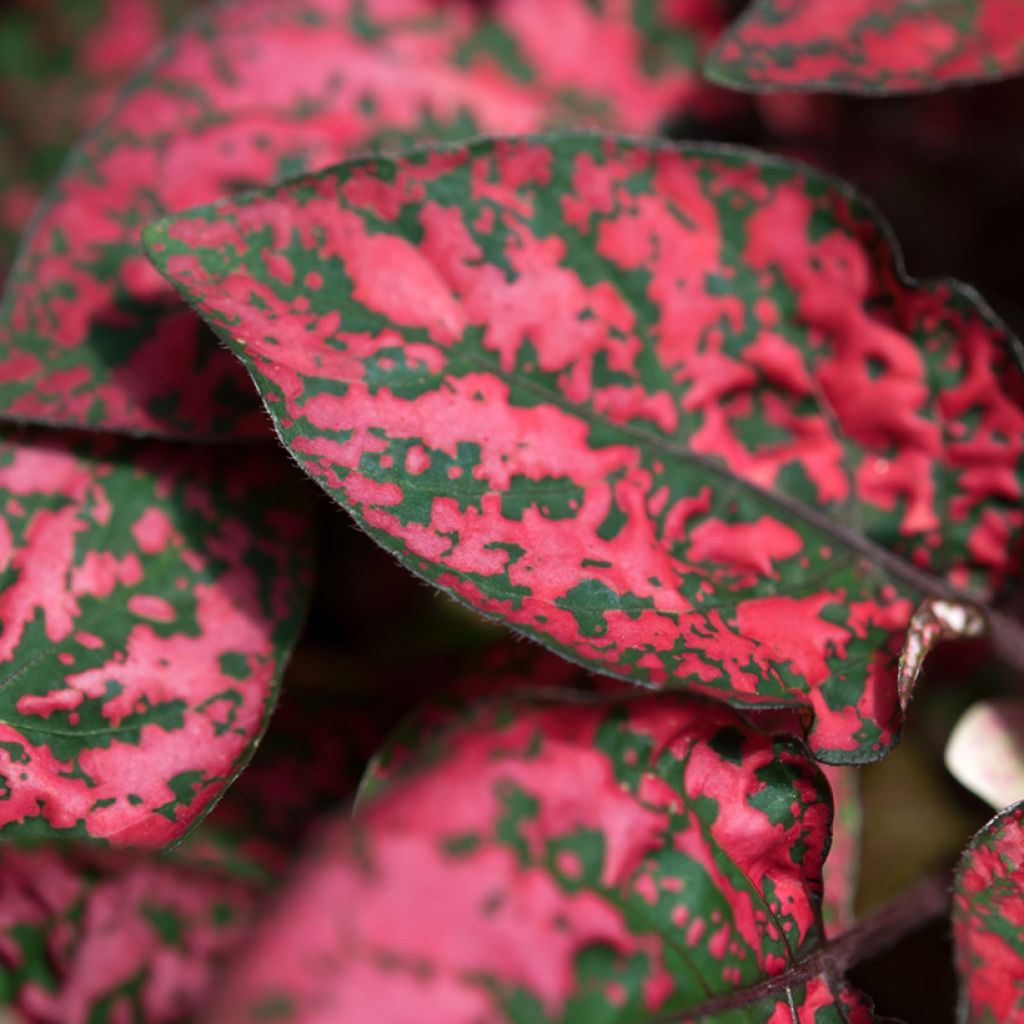

Hypoestes phyllostachya Red - Polka dot plant
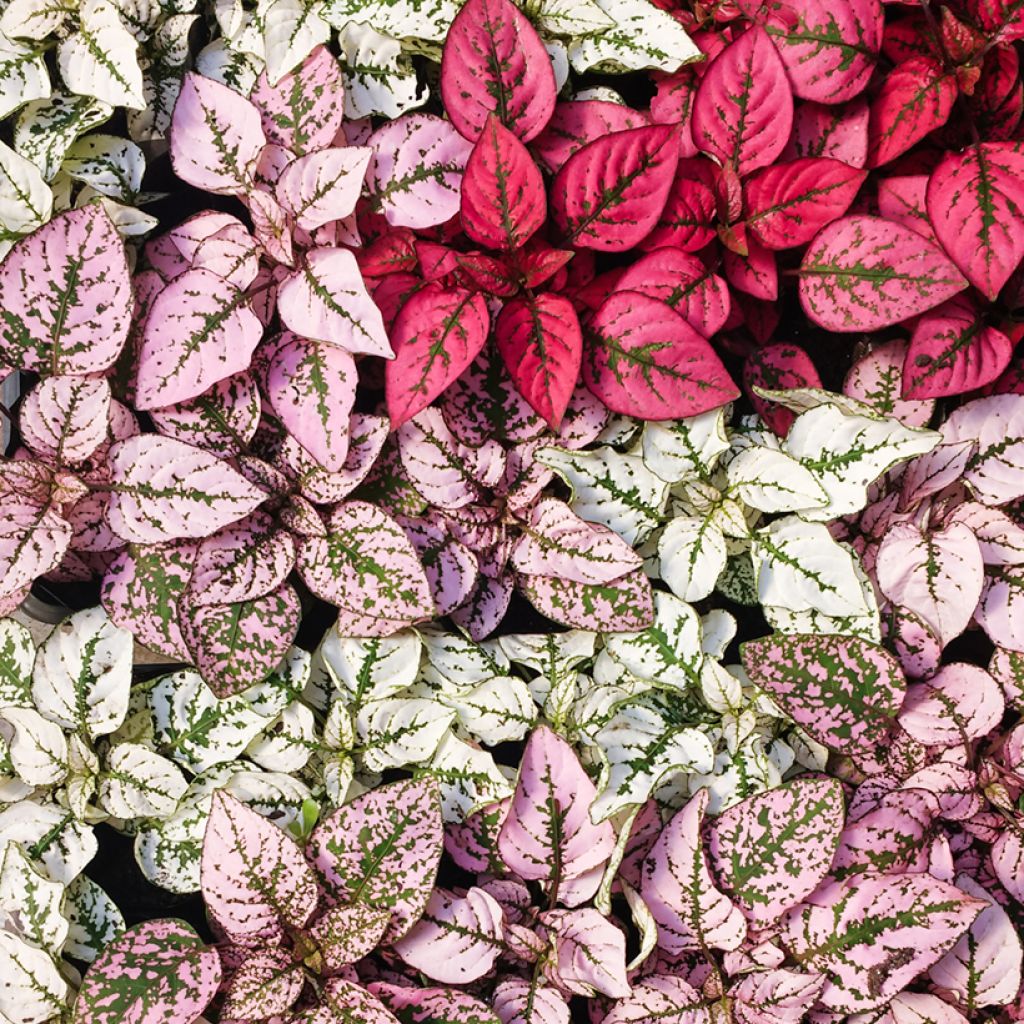

Hypoestes phyllostachya Red - Polka dot plant
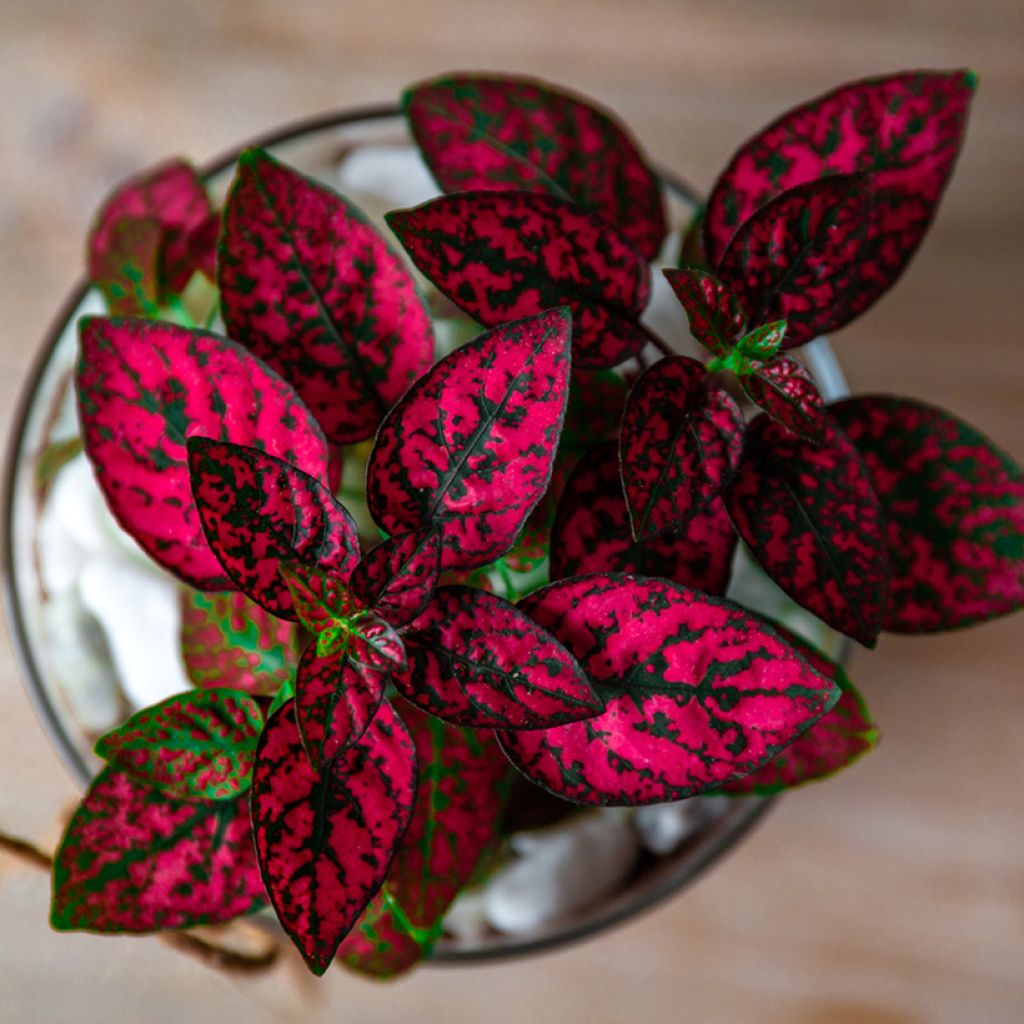

Hypoestes phyllostachya Red - Polka dot plant
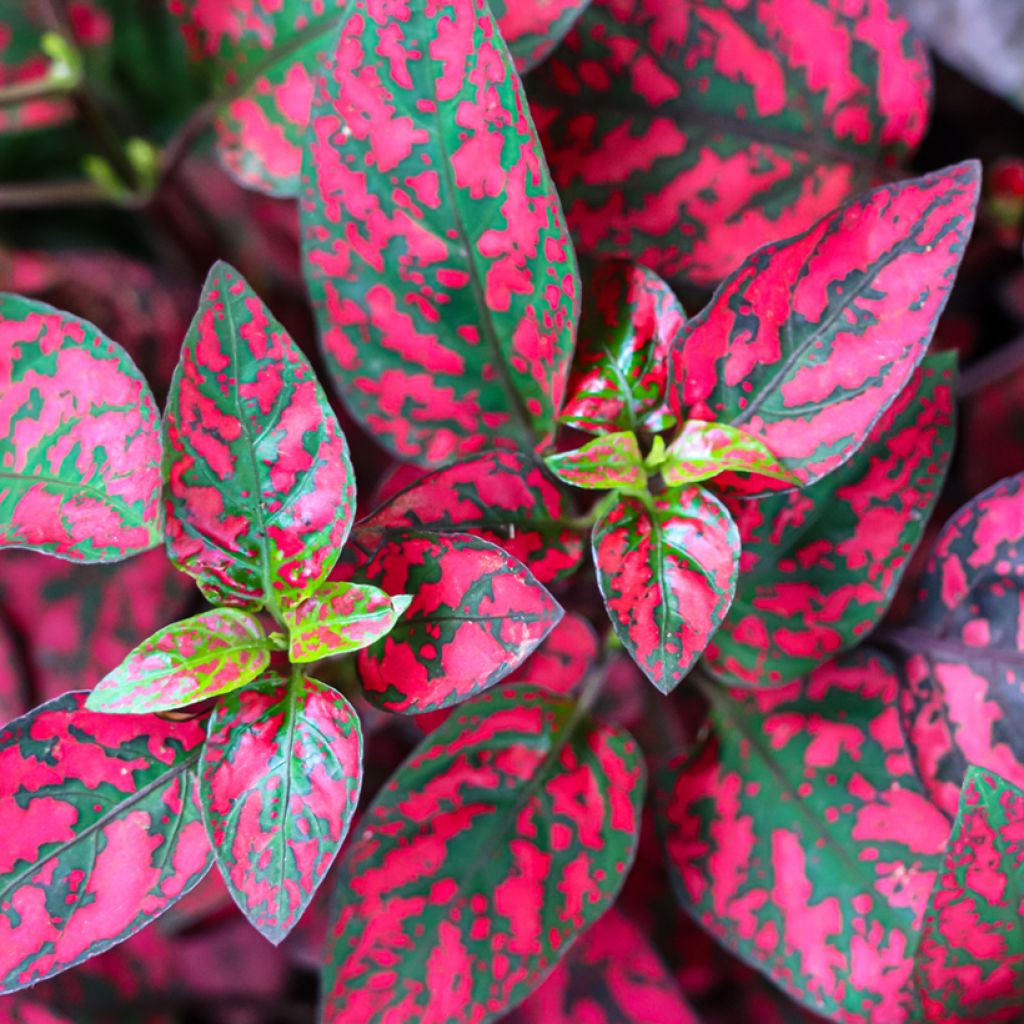

Hypoestes phyllostachya Red - Polka dot plant
Hypoestes phyllostachya Red - Polka dot plant
Hypoestes phyllostachya Red
Polka dot plant, freckle face, measles plant, pink dot, flamingo plant
This item cannot be shipped to the selected country
Delivery charge from €6.90
More information
Schedule delivery date,
and select date in basket
This plant carries a 30 days recovery warranty
More information
We guarantee the quality of our plants for a full growing cycle, and will replace at our expense any plant that fails to recover under normal climatic and planting conditions.
From €7.90 for pickup delivery and €6.90 for home delivery
Express home delivery from €8.90.
Description
The Hypoestes phyllostachya 'Red' is a variety of Polka dot plant that brightens interiors with its red speckled with green foliage. Forming a small, highly colourful clump, it will adorn a corner of the living room or bring character to a shelf. Its style suits both modern and bohemian or minimalist interiors. To intensify its colours, place it in a bright spot but out of direct sunlight and ensure moderate ambient humidity. It is an easy to grow plant that will forgive the occasional missed watering.
A member of the Acanthaceae family, the Hypoestes phyllostachya 'Red' is a tender perennial that can be grown as an annual in seasonal beds or as a houseplant. It has rapid growth and a compact dome-shaped habit, reaching 20 to 30 cm in height indoors with a similar spread. Its slender, ramified stems bear ovate, slightly pointed leaves with a soft texture and a deep red hue dotted with irregular green spots. Its discreet flowering occurs in summer, producing small tubular lavender-coloured flowers, often removed to conserve the plant's energy and encourage leaf development.
Native to the tropical forests of Madagascar, the botanical species Hypoestes phyllostachya thrives in humid, shaded environments. Indoors, it prefers bright conditions without direct sunlight, with an ideal temperature between 15 and 24°C. It favours a well-draining, slightly moist substrate and moderately humid air. This plant cannot tolerate temperatures below 15°C. Its care is simple: bright light from an east-facing window and regular watering without overwatering are key to maintaining its beautiful foliage.
The 'Red' polka dot plant will fit well in bright rooms like a living room, kitchen, or even an office. With its red speckled with green foliage, it adds a colourful and original touch that contrasts beautifully with ceramic planters. Compact in size, it will easily fit on a shelf, coffee table, or dresser, either alone or as part of a plant arrangement. Pair it with a Fittonia albivenis 'White Anne' or a Chlorophytum.
Report an error about the product description
Hypoestes phyllostachya Red - Polka dot plant in pictures
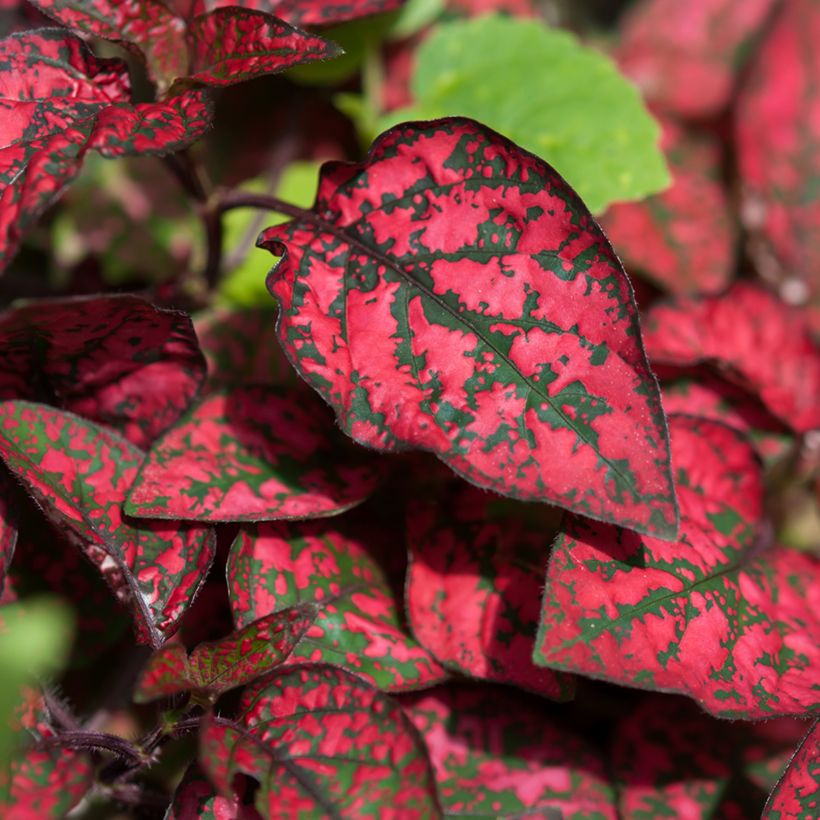

Foliage
Plant habit
Flowering
Botanical data
Hypoestes
phyllostachya
Red
Acanthaceae
Polka dot plant, freckle face, measles plant, pink dot, flamingo plant
Cultivar or hybrid, Madagascar
Other Hypoestes - Plante aux éphélides
View all →Location
Location
Maintenance and care
Potting advice, substrates and fertilisers
Houseplant care
Disease and pest advice
Maintenance and care
This item has not been reviewed yet - be the first to leave a review about it.
Haven't found what you were looking for?
Hardiness is the lowest winter temperature a plant can endure without suffering serious damage or even dying. However, hardiness is affected by location (a sheltered area, such as a patio), protection (winter cover) and soil type (hardiness is improved by well-drained soil).

Photo Sharing Terms & Conditions
In order to encourage gardeners to interact and share their experiences, Promesse de fleurs offers various media enabling content to be uploaded onto its Site - in particular via the ‘Photo sharing’ module.
The User agrees to refrain from:
- Posting any content that is illegal, prejudicial, insulting, racist, inciteful to hatred, revisionist, contrary to public decency, that infringes on privacy or on the privacy rights of third parties, in particular the publicity rights of persons and goods, intellectual property rights, or the right to privacy.
- Submitting content on behalf of a third party;
- Impersonate the identity of a third party and/or publish any personal information about a third party;
In general, the User undertakes to refrain from any unethical behaviour.
All Content (in particular text, comments, files, images, photos, videos, creative works, etc.), which may be subject to property or intellectual property rights, image or other private rights, shall remain the property of the User, subject to the limited rights granted by the terms of the licence granted by Promesse de fleurs as stated below. Users are at liberty to publish or not to publish such Content on the Site, notably via the ‘Photo Sharing’ facility, and accept that this Content shall be made public and freely accessible, notably on the Internet.
Users further acknowledge, undertake to have ,and guarantee that they hold all necessary rights and permissions to publish such material on the Site, in particular with regard to the legislation in force pertaining to any privacy, property, intellectual property, image, or contractual rights, or rights of any other nature. By publishing such Content on the Site, Users acknowledge accepting full liability as publishers of the Content within the meaning of the law, and grant Promesse de fleurs, free of charge, an inclusive, worldwide licence for the said Content for the entire duration of its publication, including all reproduction, representation, up/downloading, displaying, performing, transmission, and storage rights.
Users also grant permission for their name to be linked to the Content and accept that this link may not always be made available.
By engaging in posting material, Users consent to their Content becoming automatically accessible on the Internet, in particular on other sites and/or blogs and/or web pages of the Promesse de fleurs site, including in particular social pages and the Promesse de fleurs catalogue.
Users may secure the removal of entrusted content free of charge by issuing a simple request via our contact form.
The flowering period indicated on our website applies to countries and regions located in USDA zone 8 (France, the United Kingdom, Ireland, the Netherlands, etc.)
It will vary according to where you live:
- In zones 9 to 10 (Italy, Spain, Greece, etc.), flowering will occur about 2 to 4 weeks earlier.
- In zones 6 to 7 (Germany, Poland, Slovenia, and lower mountainous regions), flowering will be delayed by 2 to 3 weeks.
- In zone 5 (Central Europe, Scandinavia), blooming will be delayed by 3 to 5 weeks.
In temperate climates, pruning of spring-flowering shrubs (forsythia, spireas, etc.) should be done just after flowering.
Pruning of summer-flowering shrubs (Indian Lilac, Perovskia, etc.) can be done in winter or spring.
In cold regions as well as with frost-sensitive plants, avoid pruning too early when severe frosts may still occur.
The planting period indicated on our website applies to countries and regions located in USDA zone 8 (France, United Kingdom, Ireland, Netherlands).
It will vary according to where you live:
- In Mediterranean zones (Marseille, Madrid, Milan, etc.), autumn and winter are the best planting periods.
- In continental zones (Strasbourg, Munich, Vienna, etc.), delay planting by 2 to 3 weeks in spring and bring it forward by 2 to 4 weeks in autumn.
- In mountainous regions (the Alps, Pyrenees, Carpathians, etc.), it is best to plant in late spring (May-June) or late summer (August-September).
The harvesting period indicated on our website applies to countries and regions in USDA zone 8 (France, England, Ireland, the Netherlands).
In colder areas (Scandinavia, Poland, Austria...) fruit and vegetable harvests are likely to be delayed by 3-4 weeks.
In warmer areas (Italy, Spain, Greece, etc.), harvesting will probably take place earlier, depending on weather conditions.
The sowing periods indicated on our website apply to countries and regions within USDA Zone 8 (France, UK, Ireland, Netherlands).
In colder areas (Scandinavia, Poland, Austria...), delay any outdoor sowing by 3-4 weeks, or sow under glass.
In warmer climes (Italy, Spain, Greece, etc.), bring outdoor sowing forward by a few weeks.




































